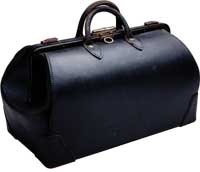Columns
CASE STUDY: Calling doctor fine
- By Rick Saia
- March 1, 2005
 In the healthcare industry, especially a hospital with a hyper-busy emergency room, getting the right information at the right time is job one.
Community Medical Center in Toms River, N.J., part of the St. Barnabas Health Care System, needed to automate its manual bed board system to provide more accurate, real-time information on patient location and bed availability. The system tracks patients and where they travel within the 596-bed hospital, along with bed availability. St. Barnabas found it ineffective; end users had to rely on information that became quickly outdated. There was “a lot of room for human error” in the system, says Ryan Grim, a .NET architect and SQL database administrator with St. Barnabas.
Working within a Microsoft .NET framework and using the NetAdvantage toolset from Infragistics, St. Barnabas developers found the solution and then some in an internally developed four-module system. The hospital can now place incoming patients into beds quicker, and the system improved inter-departmental communication. |
For instance, if a patient comes into the emergency room and the doctor decides to admit him, the ER finds an available bed through the system, then uses a handheld device to summon the transport department to take the patient to his assigned ward. The transport employee uses a bar code scanner to check the patient’s wristband and verify he has the right patient. Once the patient arrives at his assigned room, “we now know that transport person is available for reassignment,” Grim says. Now, the hospital can place patients 25 to 30 percent faster.
And, when a patient is taken to, say, radiology, the system records that, noting he’s not in his room. Hospital officials say that’s important in case family members visit or a doctor or nurse must find him.
In addition, the system allows the nursing staff to make staffing decisions based on the number of admitted patients, and helps the housekeeping staff to prepare beds quicker between discharges and new admissions.
The goal is to create a better experience for the end user and to make the patient experience “as seamless as possible,” Grim says.
Michelle Smolock, the hospital’s director of patient access, underscores the system’s importance. The hospital has one of the highest emergency room volumes on the East Coast, and admits 75 percent of its patients through the ER, which she says is a high rate for the industry. In addition, most of the people in its service area are senior citizens. And admissions can spike in summer since the hospital is located near the Jersey Shore.
The project took eight months, and St. Barnabas officials are planning to expand it within the hospital and to other St. Barnabas units.
“We’re probably at 70 percent of where we want to be,” Grim says.